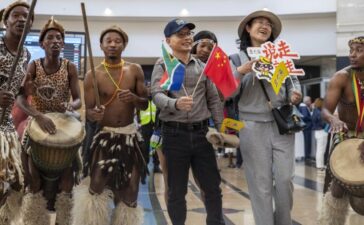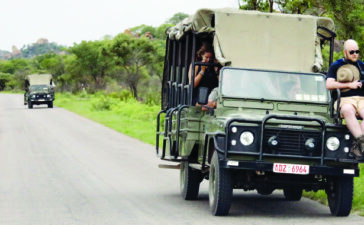Recently updated on September 29th, 2023 at 10:53 pm
Bulawayo, Zimbabwe’s second largest city, is the industrial heart of the country, but this shouldn’t deter visitors. The city is sedate and elegant, with wide, tree-lined boulevards and attractive colonial architecture. Also known as the City of Kings, it is a major transport hub, sitting on the Cape to Cairo trans-African highway and, as such, offers many attractions for the tourist and business traveller alike.
Getting there and away
Bulawayo is served by Joshua Mqabuko Nkomo International Airport, which recently underwent renovations. It is located about ten kilometres from the city and is serviced by Air Zimbabwe, SAS, South African Airways, South African Airlink and Iberia. There are flights into Bulawayo from all of South Africa’s major airports and daily flights from Harare. Getting into the city, you will need to hire a rental car (Avis and Europcar), take a taxi or hop on an airport shuttle. There are no buses or train services into the city but a taxi can be hired, and the 20 minute journey into town.
Getting around
It is fairly easy to get around Bulawayo on foot during the day, but taxis are advised during the evenings for safety’s sake. However, there are several pleasant areas in Bulawayo’s older areas that are worth wandering through. Driving is by far the easiest way to get around though so car hire is recommended, although road conditions have deteriorated over the past few years. Alternative options are to take the local taxis, which are light blue in colour, or to take your chances with the informal minibus taxi system (cheap and convenient, but crowded and in poor condition).
Where to stay
As one of the highest rated hotels, the Nesbitt Castle is a pricier option but the Victorian-style architecture and superb grounds make it well worth the stay. Friendly and efficient staff and a well-regarded restaurant make this the pick of the city. For more standard, business-friendly accommodation, you can’t go wrong with the Holiday Inn Bulawayo, especially if you’re on a tighter budget. Conveniently located near the CBD and industrial areas, it’s equipped with all the requisite business facilities. The Mpala Boutique Hotel is also a good bet for business travellers: convenience and reliability is the order of the day.
Eating out
As with many second cities, Bulawayo is laid back in style but there’s plenty to experience food-wise. At the Smokehouse, food is clearly viewed as an experience. Superb dishes with high quality presentation, served in a tranquil garden setting, offers the perfect lunch or dinner out. The Bulawayo Club, once a gentleman’s club, is now an interesting colonial throwback. A wood-panelled bar is a great drinking spot during the day and the open-air atrium is excellent for lunches. New Orleans restaurant offers reasonably priced meals, best enjoyed on the deck. The steaks are amazing.
Nightlife
Not known for its vibrant night scene, there are still places where you can enjoy the evening. The Terrace Bar, which has been a popular drinking spot for decades, has just completed renovations and is aiming to lure live bands and reintroduce live entertainment for its patrons. Zarah Lounge is an upmarket restaurant, bar in the heart of the city with a great atmosphere. Vist The Deck. The Vista right in the city has a swimming pool and rooftop terrace. If pubs are more your style, the City of Kings is full of them; try Cape to Cairo or Pub Lagondola for live music and Mosaics for all-night dancing.
In the city
You won’t lack for anything to do here; Bulawayo is home to a veritable treasure trove of museums and galleries. The Natural History Museum of Zimbabwe is a great place to start. It houses a fascinating geology section and has the distinction of possessing a dodo egg and one of the first ever caught coelacanths, as well as the second largest elephant display in the world. The Railway Museum houses many colonial relics including Cecil Rhodes’ personal train carriage; a great option for children and train fundis. The Khami Ruins (22km outside the city) are a UNESCO World Heritage Site and was once the capital of the Kingdom of Butua. Well worth the drive.
Shopping
There are plenty of modern shopping complexes in the city so all your basic needs are well catered for. At the Bulawayo Centre (in the centre of the CBD) or the Ascot shopping centre, you’ll find all the usual amenities including travel agent, news agent, clothing shops, etc. There are also several places in which to find local arts and crafts and curios: Induna Arts and Tendele Curio Shop are both good picks for local jewellery, textiles, carvings, paintings and artifacts, while Jairos Jiri Craftshop sells crafts made by disabled people, including great baskets.
Out of the city
Strategically located along the trans-continental highway, and with many historically important sites nearby, Bulawayo is a tourist mecca. It also benefits from being located close to several national parks. Matobo National Park is also a UNESCO Natural World Heritage Site and includes an Intensive Protection Zone breeding a large population of Black and White Rhinoceros. It’s situated in the Matobo Hills and the fascinating terrain is a hikers’ paradise. The Hwange National Park is the largest game reserve in Zimbabwe and is on the main road from Bulawayo to the Victoria Falls. It boasts a large variety of wildlife with one of the largest elephant populations in the world.
History and culture
Bulawayo is situated on some of the most ancient rock in the world, and the city itself is one of the oldest and most historically important in the country. The city was founded by the Ndebele king, Lobengula, in the 1870s. The name Bulawayo means “place of slaughter”, which refers to the conflict that occurred when Lobengula took the throne. In 1893, King Lobengula was forced to evacuate by British South Africa Company troops during the Matebele War. Colonial influences are present throughout the city. Today, the city is in a state of decline thanks to the ongoing economic crisis in Zimbabwe but is still rich in cultural history.
Health and safety
Bulawayo is renowned for its friendliness during the day but at night the city gets very quiet. Common sense applies here, as it does in any large metropolis. Use taxis at night and stay away from the more salubrious areas as muggings and theft do occur. While malaria is present throughout the year in the Zambezi Valley (including the Victoria Falls), the risk is negligible in Harare and Bulawayo. Take precautions if you do plan on leaving the city confines.











